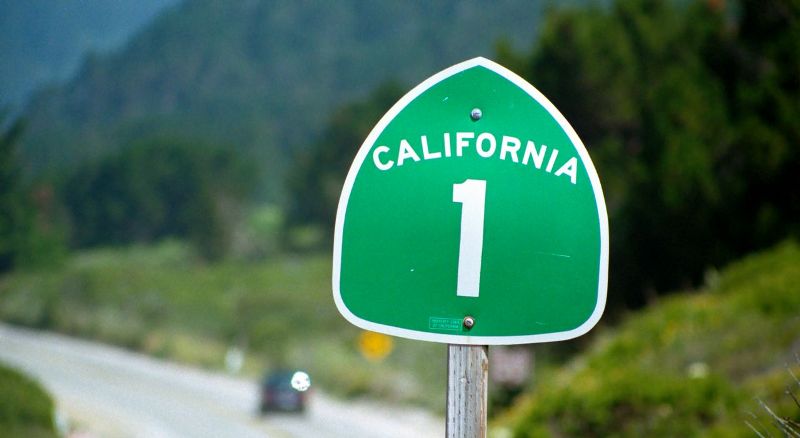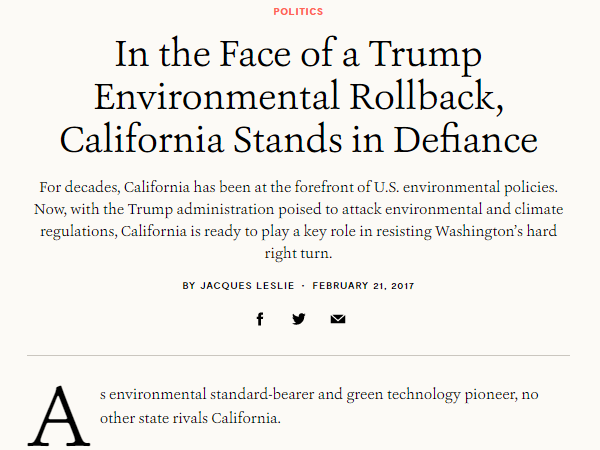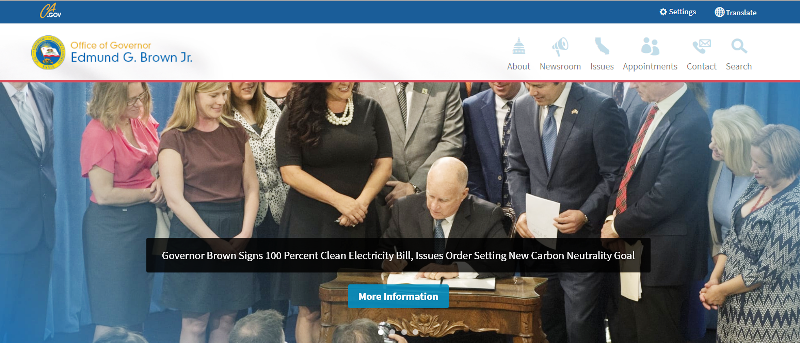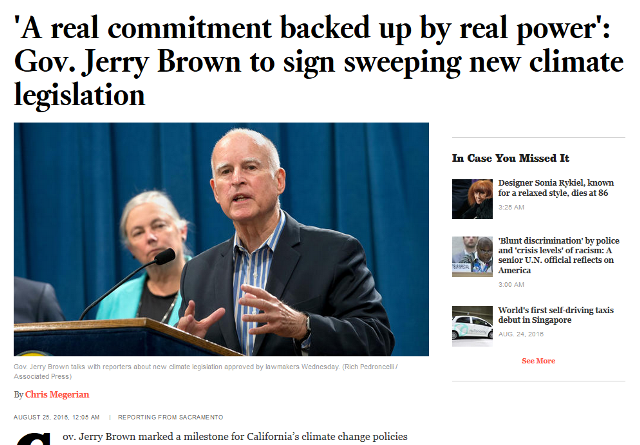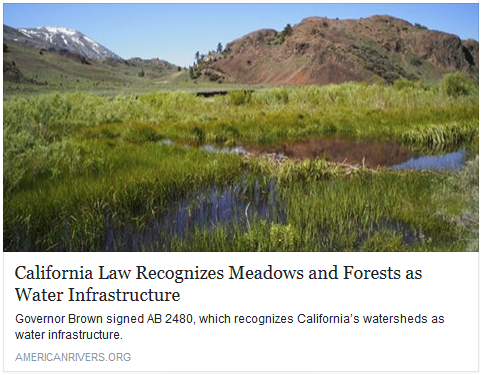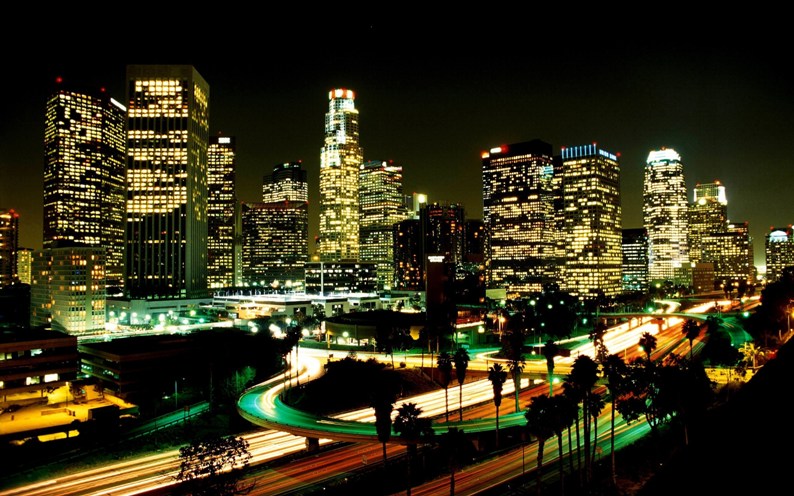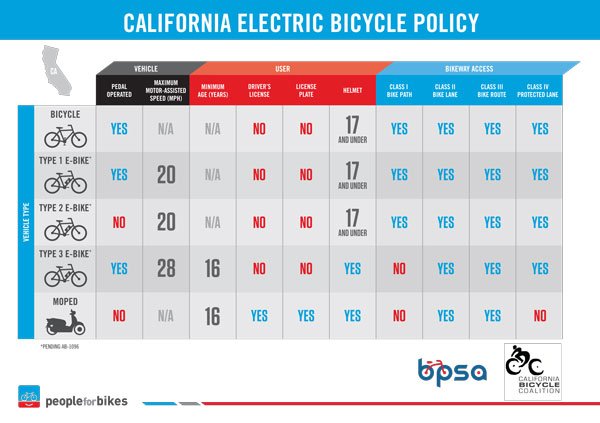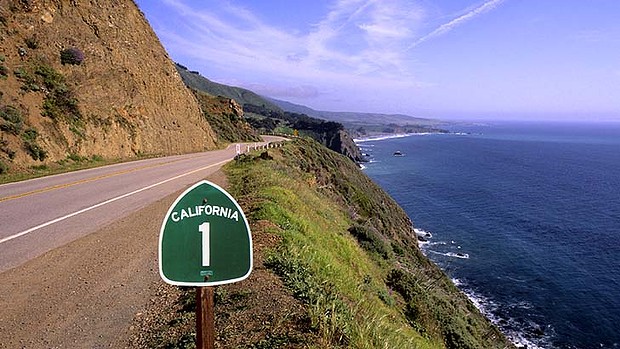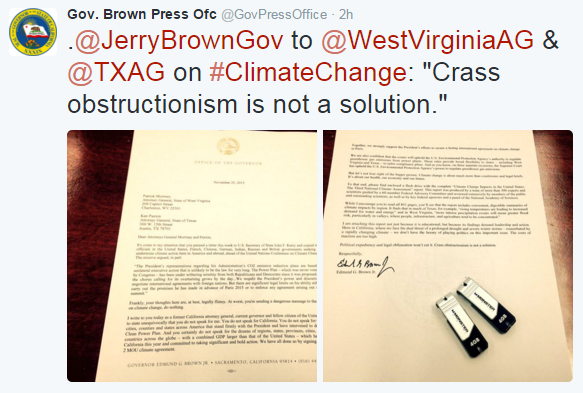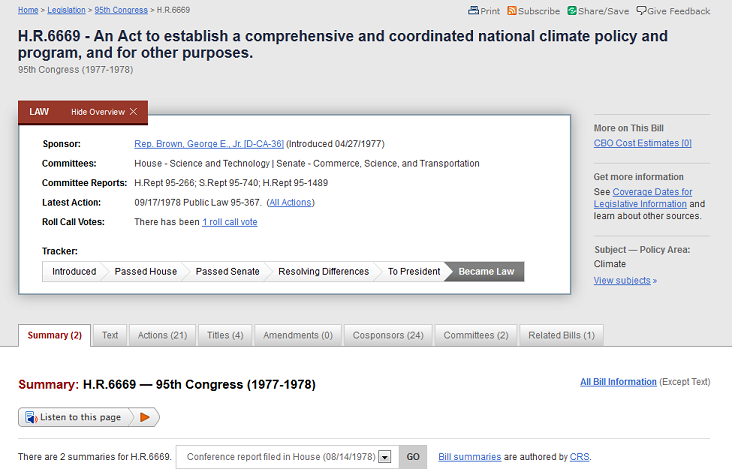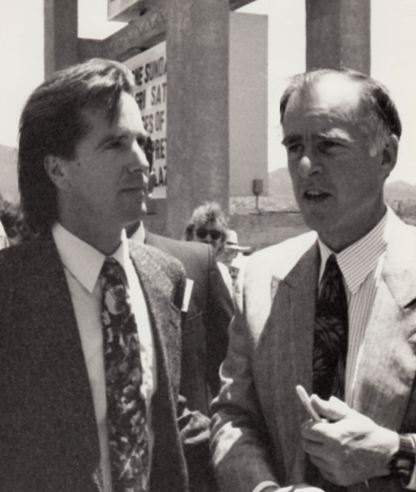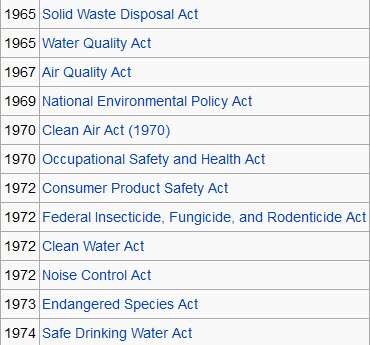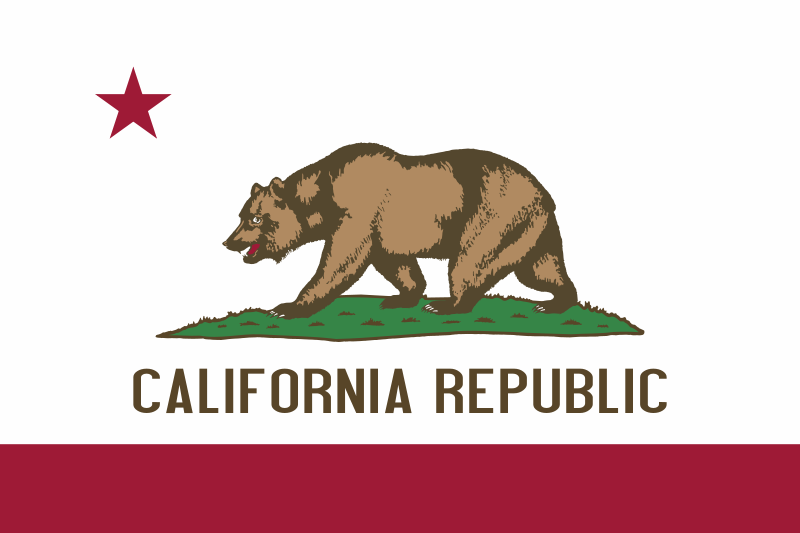California out in front in a Green future
- Via Wikipedia / California's $2.9 trillion economy is larger than that of any other state, larger than those of Texas and Florida combined.
California is the largest sub-national economy in the world. If it were a country, California would be the 5th largest economy in the world (larger than the United Kingdom, France, or India)
2020
Top priority in Califoria? Dealing with Climate Change
······························································
California state says it won’t buy cars from GM, Toyota, and other car manufacturers opposing tough tailpipe standards
California Air Resources Board, a Model of Clean Air Progress
239 Stage 1 & 2 smog alerts in 1967
0 Stage 1 & 2 smog alerts in 2016
90% Cut in black carbon since 1967
California Environmental Protection Agency
······························································
Beyond its efforts that led Clean Air Initiatives among US states and nationally in establishing Emission Standards, while setting forward an International model, California now confronts the Trump administration EPA and federal rollbacks of environmental protections...
Then there are the other problems, so many people want to be in California. The population faces new challenges...
Historic drought-related fires and fire-related blackouts aren’t like natural earthquakes... They are more like California’s other human problems, like housing affordability and homelessness and traffic — human-made catastrophes.
······························································
California's Going with Solar
Solar clean energy with batteries, storage and delivery, and look at the kilowatt price...
The combined solar power and energy storage is priced at 3.3 cents per kilowatt-hour — a record low for this type of contract, city officials and independent experts say, and cheaper than electricity from natural gas.
Under the 25-year deal with developer 8minute Solar Energy, the city would buy electricity from a sprawling complex of solar panels and lithium-ion batteries in the Mojave Desert of eastern Kern County, about two hours north of Los Angeles. The Eland project would meet 6% to 7% of L.A.'s annual electricity needs and would be capable of pumping clean energy into the grid for four hours each night.
Los Angeles already gets about one-third of its electricity from renewable sources. But California law requires 100% climate-friendly energy by 2045, a target that will force utilities and local governments to do more than keep buying low-cost solar and wind power.
“California plays an incredibly important role as a pathfinder that plots out the course for the energy transition, climate change, and the environment in general.”
-- Jules Kortenhorst, the CEO of the Rocky Mountain Institute
Institute for Local Government -- California has received worldwide attention for the state’s ambitious efforts to address climate change. California’s 482 cities and 58 counties are proud of what they have accomplished to help reduce greenhouse gas (GHG) emissions and are poised to do more in the years ahead...
• http://www.ca-ilg.org/climate-action
2019
California out in front as President Trump threatens progress of California on auto emissions standards that is a model for the nation and the world -- https://twitter.com/nowthisnews/status/1154852136997380096
(Video) Automakers agreed to make fuel-efficient cars as Trump plans to roll back federal fuel standards
California prevailing in series of environmental lawsuits against the Trump administration
Los Angeles targets 100% electric vehicles by 2050
Los Angeles Mayor Eric Garcetti isn't waiting for Congress to act on the threat of climate change. Today (April 29, 2019) he introduced the city's own version of the Green New Deal, which establishes goals of a zero carbon grid, zero carbon transportation, zero carbon buildings, zero waste, and zero wasted water by 2050.
Citing the environmental disasters the city has faced in recent years, the mayor explains in the 150-page plan that "the scale of our ambitions must meet the magnitude of this crisis."
“Politicians in Washington don’t have to look across the aisle in Congress to know what a Green New Deal is — they can look across the country, to Los Angeles,” said Mayor Eric Garcetti in a news release. “With flames on our hillsides and floods in our streets, cities cannot wait another moment to confront the climate crisis with everything we’ve got. L.A. is leading the charge, with a clear vision for protecting the environment and making our economy work for everyone.”
Building upon the Sustainable City Plan introduced in 2015, this new version raises the bar with goals of recycling 100 percent of the city's wastewater and zeroing out carbon emissions generated by buildings, transportation, electricity, and trash, with a heavy focus on mobility, public transit, zero emissions vehicles.
L.A.'s Green New Deal sets ambitious targets along its path to carbon neutrality, including plans to:
• Increase electric vehicles in the city to 25% by 2025; 80% by 2035; 100% 2050
• Convert all city fleet vehicles to zero emission where technically feasible by 2028
• Install 400 EV chargers at City buildings and parks and all libraries and install 500 additional streetlight EV chargers.
• By 2021, Ensure that 100% of the City’s new light duty purchases are electric and Meals on Wheels new program vehicles are electric.
• Ensure that 100% of medium duty trash and recycling trucks are zero emission by 2028
• Distribute 1,000 used electric vehicle (EV) rebates, 11,500 Level 2 EV charger rebates, and 75 DC fast charger rebates,
• Install 10,000 publicly available EV chargers by 2022 and 28,000 by 2028
• Build 20 Fast Charging Plazas throughout the city
• Electrify 10% of taxi fleet by 2022; and 100% by 2028
• Target 100% Zero Emission school buses in Los Angeles 2028
• Target 100% of urban delivery vehicles are zero emission 2034
• Electrify 100% of Metro and LADOT buses by 2030.
·································································
As Gavin Newsom takes his oath of office as California’s newly-elected 40th Governor, an association of green groups calls for a 'Green New Deal'.
"California sets a high standard for national climate action. Among many achievements, continuing California's environmental leadership since the 1960s, California’s legislature in 2018 passed a law requiring every new home to have solar panels, a law banning new offshore oil drilling, and a law to make the states’ electricity grid 100% carbon-neutral by 2045."
In Supporting a Green New Deal California Can Continue as a Model for National Climate Action
··············································
December / November 2018
California says all city busses have to be emissions free by 2040
California is dominating other states in electric vehicle adoption
Via Politico / Why Trump can't kill the electric car
October 2018
Stepping Up with Governor Jerry Brown
Climate Activists & Green Organizers: California Builds Bridges to Extend International Cooperation
August 2018
California Assembly Advances 100% Clean Energy Bill
“This is a huge victory for the state of California,” said state Sen. Kevin de León (D-Los Angeles), the bill’s author. “It’s a victory for clean air. It’s a victory to tackle climate change...”
July 2018
California slashes emissions, hits major greenhouse gas goal years early
In a major win for California’s fight against global warming, the state appears to have hit its first target for cutting greenhouse gases — and it reached the goal early.
Data released by the California Air Resources Board show that the state’s greenhouse gas emissions dropped 2.7 percent in 2016 — the latest year available — to 429.4 million metric tons.
This is below the 431 million metric tons the state produced in 1990. California law requires the state’s emissions, which peaked in 2004, return to 1990 levels by 2020. Since the peak, emissions have dropped 13 percent...
··············································································
Earth Mapping Developments & Updates
A salute to California "planet citizens", Rebecca Moore of Google Earth / Earth Outreach, and in memory of George E. Brown from East LA who was instrumental in advancing legislation that launched "big science" initiatives like GPS/GIS and LANDSAT to shape the first-generation of #EarthScience from space. Today, California is a leader in "New Space", even as "Governor Moonbeam" remembers how pundits once laughed, but no longer. The impact of visionary thinkers and leaders continues to make California a very special state -- and now the fifth largest economy in the world.
Earth Sciences / EcoExploring / EcoMapping
May 2018
Via Earth Justice
Via USA Today
- New homes and low-rise apartment buildings across California would include solar panels under first-in-the-nation rules approved Wednesday by the California Energy Commission.
- The rules now go to the state Building Standards Commission... “This is groundbreaking," said Pierre Delforge, senior scientist for the Natural Resources Defense Council...
- "The new rules "will save energy, lower customer bills, keep homes comfortable in increasing heat waves and reduce pollution from California’s homes and buildings."
Via the Los Angeles Times
Via the New York Times
- Solar panels have become an increasingly familiar sight on California rooftops as the state moves toward a clean-energy future. For new homes, they are about to become a requirement.
- The California Energy Commission will require solar panels on all new homes, putting the state even farther in the forefront in the use of solar power.
- California remains the undisputed champion, with 19.8 gigawatts of solar PV capacity, nearly five times as much as second-ranked North Carolina
························································
California Governor Jerry Brown and Michael Bloomberg Launch "America's Pledge"
- "Today we’re sending a clear message to the world that America’s states, cities and businesses are moving forward with our country’s commitments under the Paris Agreement – with or without Washington..."
- April 2018 / Brown vows to fight Trump over mileage rules until 'long after we: have a new president
- As President Trump moves to reverse the Obama administration’s policies on climate change, California is emerging as the nation’s de facto negotiator with the world on the environment.
··························································································
What about California's Trade Missions to China and Global Green Outreach?
- Take a Look at How the California-China Green Strategy Rolled Out
- California / China / Development of Trade / Green Technology / Renewable Energy
·······················································································································
Governor Brown meets with President Xi of the People's Republic of China, signs agreement with national government to boost green technology
Energy Innovation CEO Hal Harvey:
- "The reference point for China is not Washington, its California. They would rather learn from California than any other jurisdiction."
California and China see big economic and environmental upsides to increased cooperation. California views China as a rising dynamic force, a valuable export market, a source of new investment, and an innovation collaborator. While in China last week, Governor Brown said, “China is leading. California is leading... California-China cooperation has taken a real leap forward.” Likewise, China considers California a trailblazer for the sustainable development path it aspires to follow.
California offers lessons as China works to build a cleaner, more innovative economy. The air pollution Chinese citizens endure today from increased industrial activity and sprawling personal automobile use is reminiscent of mid-20th century smog in southern California, which spurred the creation of the California's ARB, Air Resources Board, and dozens of subsequent policy innovations.
2016
Governor Brown (2014): "This year we will take another step to strengthen the ties between the world’s second and ninth largest economies."
(Note: as of 2018, California is now ranked world's fifth largest economy)
Via the Associated Press / LA Times / May 2018
- California is now the world's fifth-largest economy, surpassing United Kingdom
- http://www.latimes.com/business/la-fi-california-economy-gdp-20180504-story.html
California-China Trade and Economic Development
○
Climate Law Blog / July 2017
Three local governments in California (San Mateo County, Marin County and the City of Imperial Beach) filed potentially groundbreaking climate change lawsuits in California state courts, each one charging a group of 20 fossil fuel companies with liability for public nuisance, failure to warn, design defect, private nuisance, negligence, and trespass.
This type of state common law climate litigation may represent the first of similar cases nationwide.
The Lawsuits
Each of the complaints presents a compelling storyline: These fossil fuel companies knew. They knew that climate change was happening, that fossil fuel production and use was causing it, and that continued fossil fuel production and use would only make it worse. They knew this, but they hid it. And then they lied about it, and paid other people to lie about it for them. All the while they profited from it, and plotted to profit more. Ultimately, their actions caused sea levels to rise, and thereby caused harm, are continuing to cause harm, and are contributing to future harm to the plaintiff governments and their residents. Accordingly, the complaints claim that the defendant companies should be held liable and forced to pay, both for the costs the local governments are incurring to adapt to sea level rise and for the companies’ own willful, deceptive, and malicious behavior.
The named defendants include Chevron, ExxonMobil, BP, Shell, Citgo, ConocoPhillips, Phillips 66, Peabody Energy, Total, Eni, Arch Coal, Rio Tinto, Statoil, Anadarko, Occidental, Repsol, Marathon, Hess, Devon, Encana, Apache, and unspecified “Company Does.” According to the plaintiffs, these companies are responsible for about 20% of global greenhouse gas (GHG) emissions that were emitted during the period from 1965 to 2015, an amount which the complaints argue is a “substantial portion” of the climate change problem. The “substantial portion” claim is legally significant.
- ○ ○ ○ ○ ○ ○ ○ ○ ○ ○ ○ ○ ○ ○ ○ ○ ○ ○ ○ ○ ○ ○ ○ ○
Governor Brown: "California is Not Turning Back, Not Now, Not Ever"
State of the State Speech (transcript) -- January 24, 2017
- http://www.motherjones.com/politics/2017/01/jerry-brown-california-trump-alternative-facts-climate-immigration
- http://www.politico.com/states/california/story/2017/01/jerry-brown-warring-with-donald-trump-back-on-national-stage-108988
○
How Much Energy Do Building Energy Codes Save? Evidence from California Houses
- For more than 35 years, the California Energy Commission has adopted Building Energy Efficiency Standards that help
- reduce a building’s energy consumption. These standards serve as a foundational part of California’s long-term strategy
- for meeting energy demand, resource conservation, and environmental stewardship.
○
Looking to the Future, Creating the Present, Remembering Roads Traveled
- * California, at the Forefront of Climate Fight, States It Won’t Back Down to Trump
- * California Hires Eric Holder as Legal Bulwark Against Donald Trump
- * California Strikes a Bold Pose as Vanguard of the Resistance
- * Success of Jerry Brown, and California, Offers Lessons
- Recent Articles by Adam Nagourney via the NY Times and LA Times
- ·······························································································
- Jerry Brown speaks of Earth Science and "truth telling" - Dec. 2016
- Watch the American Geophysical speech at YouTube:
- https://www.youtube.com/watch?v=5MLHWFO6DwE (GreenPolicy)
- Re: #EarthScience, Space and California, from the speech to the AGU:
"We got the scientists. We got the lawyers. And we're ready to fight. We're ready to defend. And California is no stranger to this fight...
"California is the future. We are pioneering space...
"Now some people say they're going to turn off the satellites that are monitoring the climate... low-earth phenomena, the LANDSAT and all the various measuring satellites that we have...
"Well, I remember back in 1978 I proposed a LANDSAT satellite for California. They called me 'Governor Moonbeam' because of that. I didn't get that moniker for nothing.
"And if Trump turns off the satellites, California will launch its own (d-mn) satellites!"
················································
California & Micro-satellites:
- Earth-facing, Measuring/Monitoring, Providing Planetary New Vision
"New Space", California Ventures and Earth Science
Planet: “We’re going to be gaining insight into the changing planet in a way no one’s ever gotten before...”
Planet, signalling 'New Space' in California.
- Planet Labs start-up story in GreenPolicy's Micro-satellites & Earth Science
- California and Silicon Valley digital technology power up a new industry and new ways of seeing and studying our world
····························································································
Renewable Energy Projects, Moving Forward
- Powerpak: 80 MWh Powerpack station from TESLA & Southern California Edison, biggest energy storage project in the world using lithium-ion batteries
○
Global Leadership On Climate Change and the Green Economy
-- Via Capital and Main by Dean Kuipers
"In 2016, California continued its commitment to ecological sanity in 2016, getting rid of sea-life-killing plastic grocery bags, protecting monarch butterflies and banning the sale of ivory and rhino horns, but the state shook the entire world when it doubled down on its already-tough carbon reduction targets. Senate Bill 32 not only significantly lowered state carbon emission targets from 1990 levels by 2020 to 40 percent below 1990 levels by 2030, but the change sailed through the legislature despite resistance from fossil-fuel interests. Coming on top of 2015 increases to the state’s Renewable Portfolio Standard (now requiring the state to get fully half of its electrical power from renewable sources by 2030), this makes California a global leader in clean energy standards.
"More important, the new carbon emissions target is a huge boost for the state’s clean tech industry. Already creating a decent number of top-paying union jobs via the state’s unique requirement that utility-scale solar be connected to the state grid, SB 32 and its companion bill, AB 197, will require a rush of new technology and innovation. AB 197 mandates that the California Air Resources Board, which directs air quality regulation, to reduce emissions in neighborhoods most affected by them, such as harbor towns and neighborhoods next to power plants. That means that cap-and-trade, which allows polluters to go on polluting so long as they buy credits from some company not polluting, won’t necessarily be the easy fix. Rather, as research by Jeffrey Greenblatt at the Lawrence Berkeley National Laboratory and others indicates, the state will need a massive influx of new zero-emission transportation, new energy storage facilities, high-speed rail, biodiesel, newly grown forests, agricultural innovation and a raft of other tactics.
"California will go on doing what it does best, inventing the future."
California's Global Warming Solutions Act of 2006 (AB 32) was the first program in the country to take a comprehensive, long-term approach to addressing climate change...
California's Climate Pollution Act has been updated and extended -- a green model for states and countries globally
California Global Warming Solutions Act
California Governor Signs World’s Toughest Super Pollutant Law
○
- California’s watersheds as water infrastructure
○
The Second-Largest City In The U.S. Is On The Verge Of 100 Percent Renewable Policy
Cities have a very unique ability to be at once visionary and pragmatic
Los Angeles is a city born of Thomas Edison’s inventions. The movie camera, obviously, helped propel it to become the second-largest city in the United States, but the light bulb, too, is integral to the city’s heritage. Unlike many of the country’s older cities, Los Angeles barely knew a time without electricity. There is even a hip bar called The Edison paying homage to the city’s history in a former power plant in the heart of downtown.
Growing up alongside the car and electricity industries, Los Angeles has long been seen as one of the country’s most modern cities. But now, as our collective dependence on power has been found guilty of damaging our water, air, and climate, the city is taking steps to be part of the new future: a clean energy future.
The City Council is going to consider a motion this month that would direct the municipal utility to determine how to move the city to 100 percent renewable energy. The motion already has broad support from councilmembers, and Los Angeles officials confirmed that the Los Angeles Department of Water and Power (LADWP) has begun work on the report, which will be developed with research partners, including the Dept. of Energy.
The renewable energy motion from council members Greg Krekorian and Mike Bonin reads:
- LADWP is on the verge of making significant investments in its infrastructure, and with that 100-year-old power system in need of significant upgrades, the city has an opportunity to re-create its utility in a way that recognizes the potential for a fossil-free future, demonstrates global leadership in its commitment to clean energy, and protects ratepayers from the increasing costs of carbon-based fuels...
○
California 'Out in Front' on Climate and Zero Net Energy Priorities
Going Green, beginning in the early days of the modern environmental movement...
"I have a continuing commitment to specific programs and policies that reduce California’s dependence on foreign oil, increase the diversity and resilience of our energy supply and ease the impact of rising energy costs on California...
Making existing buildings more efficient is a large and quickly tapped energy source... New homes and new appliances must be energy efficient and affordable...
Wind energy can help us move away from reliance on oil. California should maintain its leadership in developing energy projects using bio-gas and agricultural wastes.
Solar energy has a wide range of cost-effective applications..."
-- Governor Jerry Brown, 1981 California Clean Energy Plan
○
Going Green w/ "EBs"
- New Trails, Electric Bike Policy / October 2015 - First in the Nation
○
○ ○ ○ ○ ○
Updates:
Governor Brown at Climate Summit Signing at UN
"While national governments came together to reach a historic climate agreement in Paris last December, it's up to the world's states, regions and cities to make it a reality in the years ahead," said Governor Brown.
- "The task before us is daunting, but California will continue to lead the charge."
- Planet Citizens
○
'Green California', sustainable state government, model operations and practices
○
Governor Brown keeps a green agenda moving & political pressure on those attempting to block progress...
California Governor's Message to West Virginia and Texas
○ ○ ○ ○ ○ ○ ○ ○ ○ ○ ○ ○ ○ ○ ○ ○
California Gov. Brown signs 23 Environmental Bills / October 2015
California is ahead of the game
California's Zero Emissions Vehicle Mandate
By the 2025 model year, automakers that sell vehicles in California will have to make 15.4 percent of them ZEV. That's an estimated annual output for one state of 270,000 EVs, plug-in hybrids and fuel-cell electrics, based on projected 2025 statewide sales of 1.75 million new cars and light trucks. Plug-in hybrids with extended all-electric range are expected to account for about two-thirds of the total
○ ○ ○ ○ ○ ○ ○ ○ ○ ○ ○ ○ ○ ○ ○ ○ ○
Oh V Dub Around the World
California's CARB Busts Volkswagen for Cheating
California's Air Resources Board w/ the ICCT takes on VW
EPA and CARB Statement / Policy response to the VW defeat device discovery
Policy solutions to reduce vehicle exhaust emissions under real-world driving conditions
Transition to a global zero-emission vehicle fleet: A collaborative agenda for governments
○ ○ ○ ○
California is about to do something no state has done / Sept 2015
Back in January, California Gov. Jerry Brown (D) made a promise. His state, he said, would pursue a new package of climate goals that are the most ambitious in the nation (and among the most ambitious in the world). California was already a leader in efforts to slash greenhouse gas emissions and promote clean energy. Brown pledged to go further. By 2030, he declared, California would double the energy efficiency of state buildings; get half its electricity from renewables; and halve consumption of gasoline by cars and trucks.
At the time, all those nice-sounding goals were just words in a speech. But they could very soon become the law of the land. The state legislature is currently considering several bills (SB 350 is the most important) that would codify Brown's climate agenda. The legislation is widely expected to pass before the end of the legislative session next Friday, but not without a fight from the state's powerful oil lobby...
California has a history that derives from the experience of smog in the Los Angeles Basin... as a result, over many years, forward-looking pollution control standards were established and under the so-called Pavley Law, the first legislation in the world to regulate greenhouse gas emissions in passenger vehicles, were ultimately adopted by the United States as the national standard.
California ARB1 California ARB2
○ ○ ○ ○ ○ ○ ○ ○ ○ ○ ○ ○ ○ ○ ○ ○ ○ ○ ○ ○ ○ ○
What happens when enlightened policies are put in place?
In the absence of sufficient U.S. federal leadership, it’s cities and states that are largely moving the needle on addressing climate disruption. As the world’s 8th largest economy California has long played a catalytic role in the development of landmark national environmental laws and standards. California continues to serve as a model. [1]
As Tom Hayden has reported, “Since Governor Jerry Brown’s first term in 1974, California has been on a steady march to an alternative energy future. Enter Brown today as a modern Archimedes, the ancient Greek philosopher who searched for a leverage point from which to transform the world. California is that leverage point.”
Governor Brown began his current term by passing game-changing climate legislation, and building on the AB32 global warming legislation of the previous Governor. He has populated the administration with savvy, skillful policy makers designing leading-edge climate policies. Coupled with visionary lawmakers, the state has developed and implemented a broad suite of clean energy and low-carbon incentives and policies, while maintaining a fairly robust economy and green jobs creation.
California is poised to spend $120 billion on clean energy in the next five years, more than any other state and most foreign countries. Its plan is to achieve 33 percent of its electricity from renewables by 2020, and may double its rate by 2030. Consumers have saved an estimated $74 billion on energy efficiency programs. Silicon Valley leads the U.S. with 2/3 of green venture capital.
While fracking policy remains a serious unresolved issue, California is showing how an advanced economy can set future targets of 100 percent renewables without nuclear power. Goals in the coming decade include 1.5 million zero-emission cars and a million solar rooftops. New state building codes are driving the proliferation of zero-net energy buildings.
Meanwhile distributed energy is on its way to democratizing clean energy and displacing centralized fossil-fueled utility monopolies.
Dispelling the “jobs versus the environment myth,” California employs 199,000 workers in clean energy industries, with 100s of thousands more planned. Clean economy jobs jumped 20% over the past decade while other jobs rose only 2%. [In California in 2013, 7,755 projects were announced. 1,880 projects were under construction, 15,397 total projects were in operation.] There are already more clean energy jobs in the U.S. than jobs in the coal, oil and gas industries.
Major environmental justice legislation is set to assure hundreds of millions of dollars to implement climate policies and jobs that benefit frontline communities. That environmental justice vision will be key to international negotiations. Environmental justice has been the deal-breaker between the rich and poor countries — the poor did not create the problems yet suffer the brunt.
Governor Brown’s strategic end-run using clean energy diplomacy has led to low-carbon pacts with China, Germany, Mexico, Israel, Peru, Quebec, British Columbia, and multiple states in the Pacific Northwest, the Midwest and New England. As a Model for Regional-Local Approaches to Climate Change, the Pacific Coast Action Plan on Climate & Energy stands out.
Governor Brown has helped assemble a Green Bloc of states including the Northeast and Midwest that include at least half the American population and over 40 percent of the economy, with total GDP of $6.4 trillion. Former Governor Schwartzenegger and former New York City Mayor Michael Blooomberg are also building local and regional alliances. Many other nations are rooting for the Green Bloc’s continuing political rise.
The strategy is to force action federally and internationally from below. As Governor Brown commented, “What happens in California doesn’t stay in California.” [2] [3]
Changing the politics will come down to growing the national and global movement of movements.
○ ○ ○ ○ ○ ○ ○ ○ ○ ○ ○ ○ ○ ○ ○
California: Environmental Models to Spread the Word Globally
- The "Bioneers", for over 25 years meeting every year to share 'best practices'
○
Models for Resilience and Transformative Change
Celebrating the Bioneers 25th Anniversary Conference
Bioneers, a preeminent environmental protection organization and movement that gathers annually in the San Francisco Bay area, bringing together thousands who share green best practices and models for making a positive difference in communities throughout the US and now internationally
○ ○ ○ ○ ○ ○ ○ ○ ○ ○ ○
Plant a Tree and More!
https://www.treepeople.org/action
TreePeople, founded in Los Angeles, are a highlighted group within the Bioneers and for over 40 years have worked with success and enthusiasm.
As TreePeople explains on their website: "TreePeople inspires and supports the people of LA to come together to plant and care for trees, harvest the rain, and renew depleted landscapes. We unite with communities to grow a greener, shadier and more water-secure city at homes, neighborhoods, schools and in the local mountains. We work with volunteer leaders using our unique Citizen Forester model, and we influence government agencies for a healthy, thriving Los Angeles"
TreePeople have involved more than 2 million people in planting and caring for more than 2 million trees. TreePeople is a leading voice in dealing with the effects of California's drought and climate change impacts. TreePeople is a model for community projects, programs and visionary efforts that are being adopted nationally and globally
○ ○ ○ ○ ○ ○ ○ ○ ○ ○ ○ ○ ○ ○ ○
California / AB 1493, Pavley. Vehicular emissions: greenhouse gases
...a model of green legislative best practices
...the "Pavley Law"', first legislation in the world to regulate greenhouse gas emissions of passenger vehicles... these visionary California environmental protection laws/regulations became model air quality / air pollution legislation and were ultimately adopted by the United States as the national standard.
○ ○ ○ ○ ○ ○ ○ ○ ○ ○ ○ ○ ○ ○ ○
- Out in Front on Climate Change
Governor Brown signs aggressive climate change bill
LOS ANGELES (AP) / October 7, 2015 — Gov. Jerry Brown dramatically increased California's climate-change goals on Wednesday, committing the state to use renewable energy for half its electricity and make existing buildings twice as energy-efficient in just 15 years.
○
America Magazine | July 2015
California Governor Jerry Brown has spent his entire life in public service. After college Brown spent a few years as a Jesuit seminarian. He has spent the 45 years since serving the state of California at every level, from Los Angeles community college district trustee to mayor of Oakland, state Attorney General, governor, candidate for Senate twice, and candidate for the presidency three times. In his 1992 run he carried six states, and came in second in voting at the Democratic convention to Bill Clinton...
- "I think it definitely advances the church’s position on the environment. The pope made a very clear articulation of the responsibility and the respect that human beings owe the rest of creation. And he’s taking on a real existential threat to the underlying conditions on which our civilization is dependent, the stability of the climate, which has been very favorable for the last 10 to 12 thousand years. So it’s important for reorienting Catholics to the rules and the laws of nature that can’t be ignored or abused in the name of individual freedom or desire or initiative. As people work out their various ways of living they have to take into account not just what they want to do, but what nature dictates and what science tells us about the way human beings are enmeshed in and dependent on a greater and complex web of life."
- "The pope is also raising the point, which gets serious opposition from many quarters, of how much material stuff is really appropriate, that there are certain limits and certain ways of living and industrializing and carrying on that are more compatible with a sustainable and healthy environment. The encyclical raises a real challenge to a modern world that is so dependent on the market for authority and for the allocation of life’s goods and services. The pope is raising the ante, saying No, you have to look at the impact. When you’re disturbing the environment you’re going to create negative feedbacks that are going to be felt disproportionately by poorer people, more vulnerable people who don’t have the assets and the capital to protect themselves against the extreme weather and the disruptions that follow in the wake of an impaired climate regime, which is where we’re going."
- "So all in all I’d say it’s a welcome voice, a clear voice that definitely lays out ideas consistent with the Catholic tradition but also very related to the times that we’re in..."
○
- "California has this history that really derives from the experience of smog in the Los Angeles Basin, and the response to that over many administrations has led to where we are today. As a matter of fact the standards that were established under the so-called Pavley Law, 'the first legislation in the world to regulate greenhouse gas emissions of passenger vehicles, were ultimately adopted by the United States as the national standard'".
"Today Los Angeles has ten times as many cars as it did in the 50s, and the air is 95 percent cleaner. That’s a pretty dramatic move, one that countries like China and India are taking notice of."
"So we’ve had that history. As far as people’s attitudes I would say that there is a strong preference for favoring policies that nurture the environment..."
○
- Out in Front on Solar Energy Production
- Competing and economically cooperating with China to push solar development
- See Governor Brown's trade missions to China
○
Quick Look at California's Green Vision
Pacific Coast Climate Action Plan
○
January 2015
Who would want to be Governor of California? (CBS Video)
Challenge and Best Practice Solutions...
In his re-election victory speech Tuesday night, Brown mentioned Props 1 and 2 as being vital to his goals as governor.
"Save money, save water, those are two pillars," Brown said.
November 2014 - the State of California under the leadership of its green governor, Jerry Brown, passed a set of laws, with Proposition One at the center of a wide-ranging plan to encourage a range of water conservation usage and saving measures, California again out in front of national/global efforts to deal with climate change/drought.
Having led the effort to shape and urge passage of a top state priority in the 2014 election, the Governor succeeded as voters passed Proposition 1 – the Water Quality, Supply and Infrastructure Act of 2014 – by a margin of 67%-33%.
Proposition 1 provides $7.5 billion in new and redirected bond funds for a wide range of water related projects that will:
- Protect rivers, lakes, streams, coastal waters and watersheds
- Provide regional water security, climate and drought preparedness
- Provide public benefits through a wide range of water storage options that demonstrate improvement to the state water system, cost-effectiveness and net improvement in ecosystem and water quality conditions
- Promote water recycling
- Improve drinking water quality
- - - - - - - - - - - - - - - - - - - - - - - - - - - - - - - - - - - - - - - - - - - - - - - - -
California plastic bag ban (2014)
- - - - - - - - - - - - - - - - - - - - - - - - - - - - - - - - - - - - - - - - - - - - - - - -
President Obama Speaks in Orange County: No Time for Climate Denial
Siterunner / SJS: Remembering the scientist/professors from the Univ of California in Irvine (Orange County), Nobel laureate Frank Sherwood Rowland and Mexican-born, Nobel prize-winner from San Diego Mario Molina, whose scientific findings together in the 1970s first put Ozone depletion and CFCs into public awareness. Their prodigious work and visionary science led to the Montreal Protocol -- the first substantial international agreement to limit destructive atmospheric emissions. The two Montreal ozone treaties have been ratified by 197 parties, which includes 196 states and the European Union, making them the first universally ratified treaties in United Nations history.
Let's look a bit more at the beginnings of what is called the modern environmental, activist movement (as distinguished from the conservationist origins of environmentalism ala John Muir, the Sierra Club and all those after Teddy Roosevelt who looked to the 'big picture' and what government can do to benefit 'the commons' and common good, preserving and protecting Earth's resources and beauty. As Roosevelt acted to re-define executive orderse and government monument into preservation with his action to 'go around' mining and industry blocking in Congress to preserve the Grand Canyon as a national monument. Many in the 1960s looked to expand protections of the the commons, working through Congress when possible as a result of public pressure, organizing and activism, and we also worked around Congress as needed pushing for both local and presidential action keeping in mind the precedent of Roosevelt (Roosevelt’s action in 1908 with the Grand Canyon set an important precedent for future Presidents to use for conservation efforts when there wasn’t consensus within Congress to act.) The 1960s, in many ways with the beginning of a larger picture realization carried worldwide with new communication systems and the first pictures from the Apollo 8 mission, led to a rush of visionary 'blue-green' proposals and policies.
- - - - - - - - - - - - - - - - - - - - - - - - - - - - - - - - - - - - - - - - - -
SJS/GreenPolicy360 Siterunner
Memories / Work in Progress
Looking Back at Foundations of Environmental Protections
California and the Modern Environmental Movement
- The beginning of the US environmental era, foundation of forward-looking law
- 'Teach-Ins' & the First 'Earth Day'
"My friend George"
National Climate Program Act
An Act to establish a comprehensive and coordinated national climate policy and program
- 95th US Congress (1977-1978)
- Authored by Rep. George E. Brown / East Los Angeles
- - - - - - - - - - - - - - - - - - - - - - - - - - - - - - - - - - - - - - - - - - - - - -
SJS / Working to advance a presidential campaign, put together a campaign platform, take new ideas into the debates, press the Democratic Party toward a progressive direction...
Alongside the California Governor and with California spirit...
The 1992 Presidential Campaign
Governor Edmund (Jerry) Brown Brings Forward a Diverse Eco-nomic/Environmental Platform
Jerry Brown's Presidential Campaign Addresses the Dem Platform Com't
Jerry Brown's Presidential Campaign Addresses the Dem Platform Com't 2
- At the Democratic Party Platform Hearings
- Presenting a forward-looking campaign vision
- - - - - - - - - - - - - - - - - - - - - - - - - - - - - -
- Greening Our Blue Planet
○
- Agriculture
- Air Pollution
- Air Quality
- Atmospheric Science
- Bioneers
- California
- Citizen Science
- City Governments
- Clean Air
- Clean Water
- Climate Change
- Climate Policy
- Climate Smart Agriculture
- County Governments
- Earth360
- EarthPOV
- Earth Science
- Eco-nomics
- Ecology Studies
- Electric Vehicles
- Energy
- Energy Policy
- Environmental Full-cost Accounting
- Environmental Protection
- Environmental Security
- Environmental Security, National Security
- EOS eco Operating System
- Externalities
- Gas-Powered Transportation
- Global Security
- Global Warming
- Green Best Practices
- Green Networking
- Green Politics
- Health
- Initiatives
- Labor Issues
- Living Wage
- Minimum Wage
- Natural Resources
- Ordinances
- Planet Citizen
- Planet Scientist
- Planet Citizens, Planet Scientists
- Planetary Science
- Policies
- Programs
- Pollution
- Renewable Energy
- Resolutions
- Sea-Level Rise & Mitigation
- Smart Homes
- Solar Energy
- State
- Strategic Demands
- Sustainability
- Sustainability Policies
- ThinBlueLayer
- Transportation
- Virtual Earth
- Virtual Planet
- Water
- Water Quality
- Whole Earth
- Wind Power
